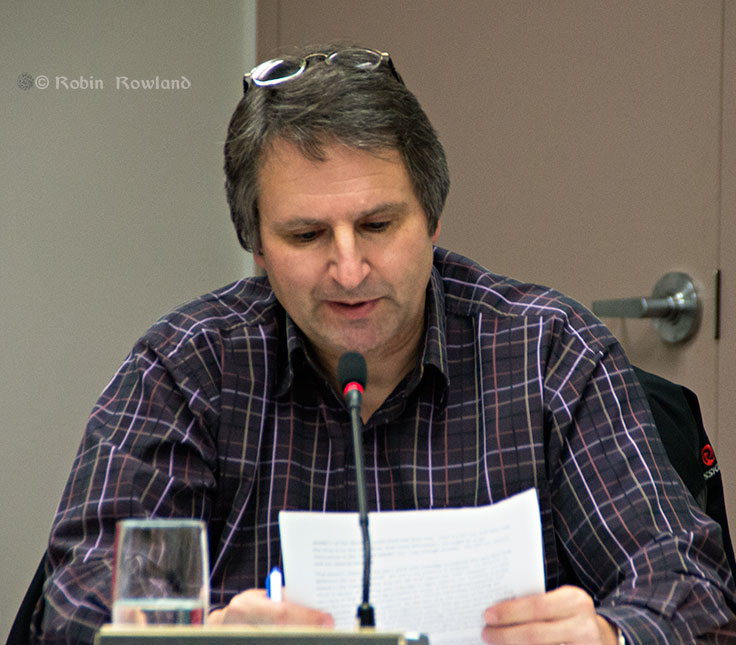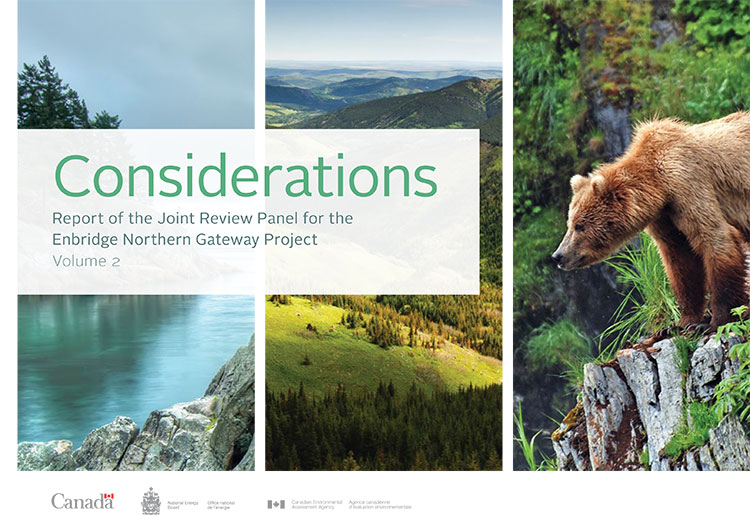
District of Kitimat Council voted Monday night to hold a plebiscite on whether or not the community supports the controversial Enbridge Northern Gateway project.
District council and staff will decide the actual question for voters and the date for the plebiscite in the coming couple of weeks.
A staff report described a plebiscite as “a non-binding form of referendum,” as defined by the BC Local Government Act.
The council decision comes after the Northern Gateway Joint Review Panel released its decision on December 16, that approved the pipeline and tanker project along with 209 conditions.
After the release of the Joint Review decision, the District of Kitimat issued a news release saying, “Kitimat Council has taken a neutral stance with respect to Northern Gateway. Council will take the necessary time to review the report in order to understand the content and reasons for the decision.”
On January 16, 2012 the council adopted a resolution “that after the completion of the JRP process, the District of Kitimat survey the residents of Kitimat regarding their opinion on the Enbridge Northern Gateway project.” After the JRP decision, the District reaffrimed that it would “undertake a survey of Kitimat residents to determine their opinions of the project now that the JRP has concluded its process.”
District staff had recommended hiring an independent polling firm to conduct the survey, pointing to a pollster’s ability to craft the appropriate questions and provide quick results.
Council quickly shot down the idea. A motion by Councillor Mario Feldhoff to use a polling firm did not get a seconder.
Councillor Rob Goffinet, who made the motion for the plebiscite, noted that even as a politician he doesn’t answer phone calls from unknown numbers. He said, “People do not want a pollster to phone them and do a check list how do you feel on a project. How can we be assured if someone in or out of their home will answer a call from a pollster? I would give total responsibility to every adult citizen of Kitimat who has a point of view to express it in a yes or no ballot.”
Councillor Phil Germuth added, “Those are the same companies that went out prior to the last provincial election and said one party was going to wipe it out and we know what happened there.” Germuth was referring to BC Premier Christy Clark’s come from behind majority victory which was not predicted in the polls.
Germuth told the meeting he believed an unbiased question could be posed in the form of a referendum on the Northern Gateway project. “I have full confidence in our staff that they will be able, along with some assistance from council, to develop questions that are not going to appear biased. It should be very simple, yes means yes, no means no.”
Councillor Mario Feldhoff, who earlier in the evening had, for the first time, declared that he is in favour of the Northern Gateway project, told council that he preferred using a polling firm because it could come back with a “statistically significant” result.
Council voted six to one in favour of the plebiscite. The lone dissenter was Councillor Edwin Empinado who told his colleagues that a mail-in ballot, another of the options presented by staff, would be more inclusive. Empinado said he was concerned that a plebiscite would mean a low voter turnout.
Warren Waycheshen, the district’s deputy chief administrative officer, told council that the plebiscite would have to be held under the provisions of BC’s Local Government Act which covers elections and referenda, but with the plebiscite the council would have more flexibility in deciding how the vote would take place. The act would still cover such things as who was eligible to vote and the use of campaign signs.

The neutrality that council had maintained for at least the previous three years began to break down during Monday’s meeting meeting when Germuth proposed a motion that would have required Enbridge to install within Kitimat’s jurisdiction a detection system capable of locating small volumes of leakage from the pipeline, a measure that is likely beyond the recommendations of the JRP decision.
It was then that Feldhoff became the first Kitimat councillor to actually declare for or against the Northern Gateway, telling council, saying he agreed with the JRP, “The overall risk was manageable and the project was in Canada’s interest. On the whole I am in favour of the conditions and recommendations of the JRP… Not only am I a District of Kitimat Councillor, I am a Canadian. To my mind, opposition to the JRP Northern Gateway report at this stage is yet another case of NIMBY-ism, not in my backyard.”
In the end, at Feldhoff’s urging, the council modified the original motion, so that it called on the District to meet with Enbridge to discuss an enhanced pipeline leak detection system where a leak could “impact the Kitimat watershed.”
It’s not clear what Council will do with the result of the plebiscite, since it is “non-binding.”
In the past two years, Terrace, Prince Rupert and Smithers councils, together with Kitimat Stikine Regional District and the Skeena Queen Charlotte Regional District, all voted to oppose Northern Gateway. Those were all council votes, taken without surveying local opinion.
Most of the decisions are in the hands of the federal government which has 180 days from the release of the JRP report to approve the project.





